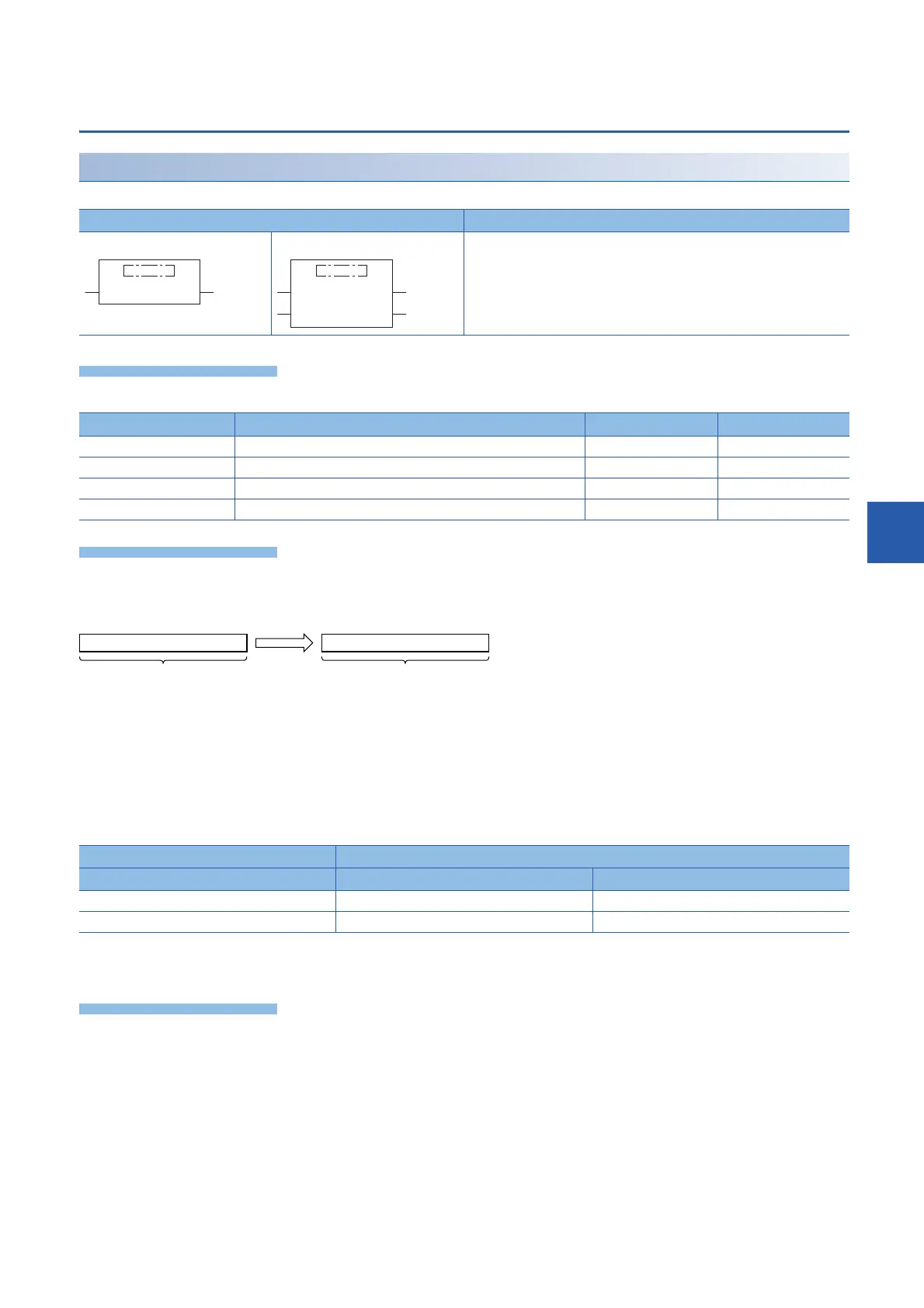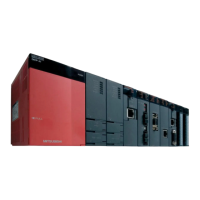15 TYPE CONVERSION FUNCTIONS
15.18 Converting INT to WORD
709
15
15.18 Converting INT to WORD
INT_TO_WORD(_E)
These functions convert INT type data to WORD type data.
■Descriptions, types, and data types
■Operation processing
• These functions convert the INT type data input to (s) to WORD type data and output from (d).
• A value input to (s) is the INT type data value.
■Operation result
1. Function without EN/ENO
The operation processing is executed. The operation output value is output from (d).
2. Function with EN/ENO
The following table lists the execution conditions and operation results.
*1 When FALSE is output from ENO, data output from (d) is undefined. In that case, modify a program so that the data output from (d) is
not used.
There is no operation error.
Ladder diagram Structured text
[Without EN/ENO] [With EN/ENO] [Without EN/ENO]
d:=INT_TO_WORD(s);
[With EN/ENO]
d:=INT_TO_WORD_E(EN,ENO,s);
Argument Description Type Data type
EN Execution condition (TRUE: Execution, FALSE: Stop) Input variable BOOL
s Input Input variable INT
ENO Output status (TRUE: Normal, FALSE: Abnormal) Output variable BOOL
d Output Output variable WORD
Execution condition Operation result
EN ENO (d)
TRUE (Executes operation) TRUE Operation output value
FALSE (Stops operation) FALSE
*1
Indefinite value

